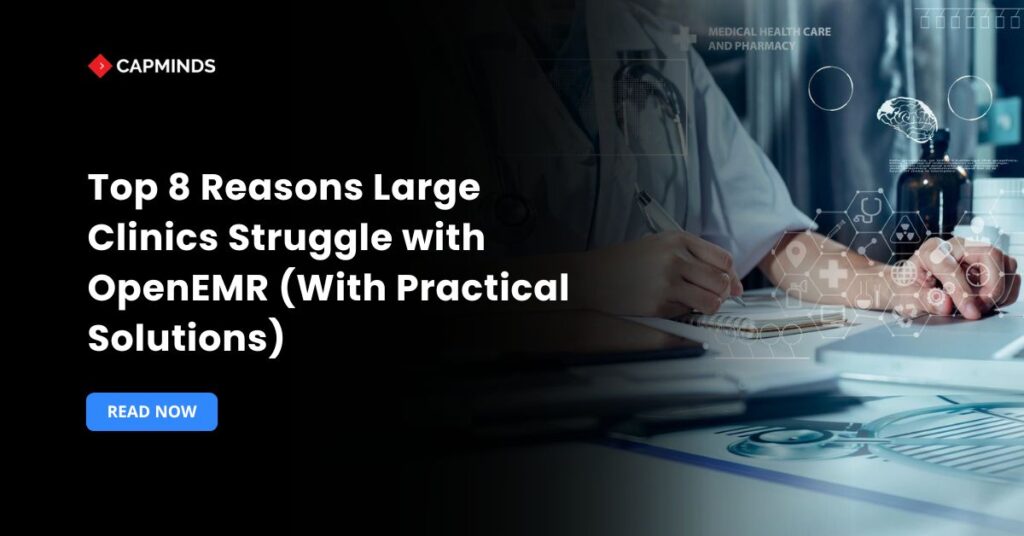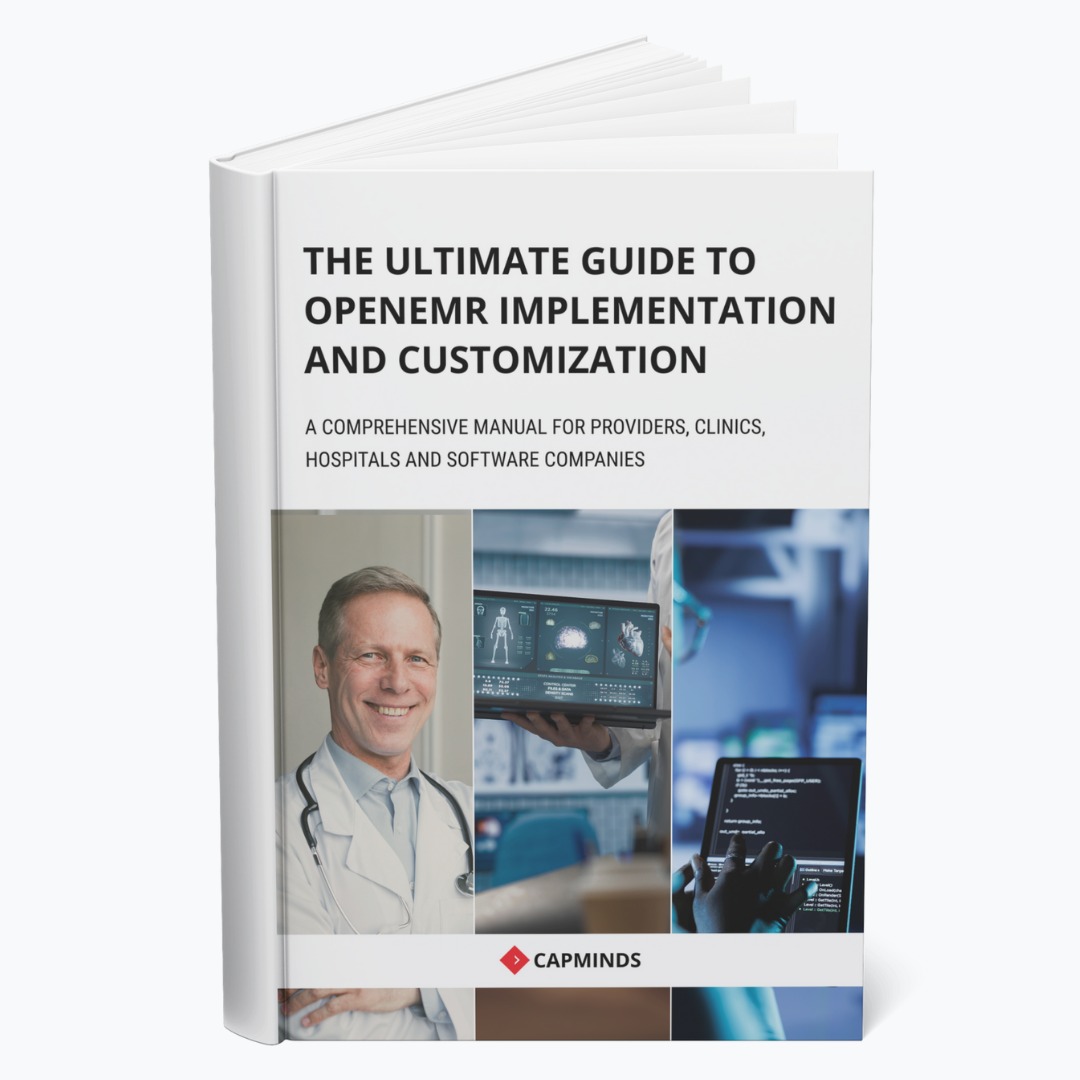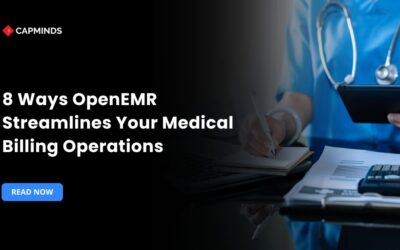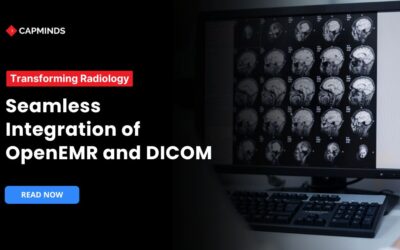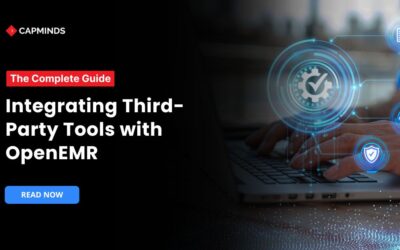Top 8 Reasons Large Clinics Struggle with OpenEMR (With Practical Solutions)
An OpenEMR, to begin with, is a free source of electronic medical records and practice management. It facilitates a space for clinics to centralize health records, finances, and calendars. The latest releases include support for HL7 FHIR interoperability and modern web frameworks for enhanced performance and usability. It covers functions from scheduling to the final payment by patients.
It is full-on HIPAA compliant for the entities covered by it. The covered entities are guaranteed compliance by OpenEMR’s federally certified software, HIPAA-compliant cloud services, and AWS’s Business Associate Services.
In addition to AWS, OpenEMR now integrates with other cloud service providers such as Microsoft Azure and Google Cloud that offer HIPAA-compliant solutions, thereby providing clinics with multiple deployment options. OpenEMR serves as a cement to the challenges faced by large clinics.
Let us concentrate on the problems and how this adoptable OpenEMR can solve them diligently.
Challenge 1: The Complication of & Outpatient Documentation and Related Tasks
Solution: Hybrid Inpatient/Outpatient Support
The current status of the outpatient and in-patient focus and the hybrid support of OpenEMR for the outpatient community are;
- Encounters
- Documents
- Scheduling
- Billing
- Medical coding
- Cloud-based
- Demographics
- Lab integration
- E-prescribe
- SOAP notes
- Decision support
- Problem/Med list
OpenEMR is also keen and working on features like smart self-measuring and clinical text analysis. The system now includes integrated telehealth modules, real-time drug interaction checking within E-prescribe, and AI-based analytics for clinical text, enhancing overall outpatient care.
For hospitalized/in-patient management, they are working on facilitating hospitals and clinics by acquiring regular vitals and hooking them into their big data platform to provide the physicians with more insights and useful information rather than providing raw data with features like hospital unit support. The web PACS system allows providers to read the radiology report along with the ability to see the DICOM image.
Additionally, integration with IoT devices now enables remote patient monitoring, and the web PACS has been upgraded to support cloud-based image storage and faster retrieval, improving radiology workflow efficiency.
Challenge 2: Managing claims, A/R Interface, Insurance Queries, etc.
Solution: Advanced Billing
OpenEMR’s medical billing feature supports;
- 5010 standards that regulate the electronic transmission of specific health care transactions
- Institutional Billing Standards (UB-04), the uniform billing form for institutional providers
- Electronic billing to clearing houses like Office Ally and ZieMED using the Accredited Standards Committee X12
- Paper claims
- The medical claim management interface
- Insurance Eligibility Queries
- Insurance Tracking Interface
- Accounts Receivable Interface
- EOB Entry Interface
- OpenEMR billing is customizable to work with a clearing house for automated Electronic Remittance Advice entry
- Has a flexible system of coding including CPT, HCPCS, ICD-9, ICD-10, and SNOMED codes, and the ability to add others.
These billing abilities and integrations allow easy billing and coordination of insurance processes.
New enhancements include FHIR-based claims processing and real-time insurance eligibility verification through integrated APIs, further streamlining revenue cycle management.
Challenge 3: Secured Electronic Data Exchange Across Different Systems
Solution: Advanced Security
OpenEMR is 100% HIPAA compliant. A security risk assessment is a requirement in the US for compliance with HIPAA and Meaningful Use. The OpenEMR provides security to;
- The support for a role-based menu (that allows customization of OpenEMR’s main menu) and a custom-based menu (while developing it, each menu item has some fields).
- Ability to encrypt patient documents (it uses the PHP mcrypt library).
- Encryption methods have been updated to use PHP’s OpenSSL functions along with modern encryption libraries, replacing the outdated PHP mcrypt library for enhanced security.
- Active directory support.
- Database correction, encryption support.
- Supports fine-grained per-user access controls.
- Remote access from any latest web browser with an appropriate security certificate.
Challenge 4: Cost-Budget Barriers to Effective Treatments
Solution: Low-Cost Medical Devices Connectivity
The major challenges faced by practices are the cost associated with developments and upgrades. OpenEMR is an open source, which means it’s free to download, install, upgrade, and use. The cost enters only when additional support is needed.
The cost of OpenEMRs is comparatively lower than most proprietary EMRs developed by traditional vendors. This is the sole reason why they provide low-cost medical device connectivity.
Moreover, support for industry standards like HL7 FHIR and expanded APIs now facilitates seamless connectivity with a wider range of modern medical devices, reducing overall integration costs.
Challenge 5: Proper Tracking of Patient Prescriptions and Medications
Solution: Quick & Effective Prescribing
Tracking and managing patient prescriptions is always a headache for healthcare providers, along with all the other tasks they do. OpenEMR’s e-prescribing solves all the issues with this particular problem. OpenEMR’s prescription feature facilitates;
- Tracking of patient prescriptions and medications
- Online drug research
- Layout customization (with options for Drug Enforcement Administration, National Provider Identifier, and state license numbers.
- Creation and sending of prescriptions
- Internal pharmacy dispensary support like in-house prescription dispensing, inventory of internal medications, and other healthcare supplies.)
Enhanced e-prescribing now supports integration with real-time pharmacy networks and electronic prior authorization processes, offering improved turnaround times and error reduction.
Challenge 6: Making timely, appropriate clinical decisions
Solution: Clinical decision rules
These tools are created to help physicians make therapeutic and bedside diagnostic decisions. 3 stages are involved in developing a CDR;
- Inference
- Authentication, and
- Implementation.
Many criteria need to be fulfilled while designing and measuring the results of an implementation trial. The CDR feature covers the following functions;
- Patient and physician reminders
- Automated Meaningful Use Measurement Calculations
- Fully Customizable and Flexible
- Clinical Quality Measure Calculations
Recent updates include the integration of predictive analytics using modern machine learning algorithms, which assist in offering more precise diagnostic and therapeutic recommendations, based on up-to-date clinical guidelines and institutional protocols.
Related: How to Optimize Clinical Decision Support with OpenEMR’s AI-Powered Alerts & Reminders
Challenge 7: Language and Cultural Barriers
Solution: Multilingual Support
OpenEMR is software that is being adopted globally for its versatile use and abilities, and the barrier to language does not bother its adoption as it now supports nearly 34 languages.
Any language can be added and translated using a collaborative Google Docs spreadsheet managed by the OpenEMR community.
- It fully supports UTF-8 encoding (an encoding system for Unicode. It translates any Unicode character to an equally unique binary string, and can also translate the binary string back to a Unicode character.
- Supports RTL (right to left).
- Supports the use of multiple languages within the same clinic.
- The language support has expanded to over 40 languages. Enhanced multilingual support now includes improved accessibility features and better handling of regional dialects and right-to-left (RTL) script nuances.
Challenge 8: Patient Access
Solution: Patient portal
Facilitates patient-provider communications and empowers patients to take care of their health, diagnoses, and treatment by themselves. OpenEMR patient portal serves as a direct platform for communication within appointment scheduling and document and file sharing.
In OpenEMR, there are two options for setting up a patient portal.
- Functional patient portal (included with OpenEMR).
- CMS patient portal (uses a set of APIs included within OpenEMR).
The patient portal feature in OpenEMR contains the following functions;
- Scheduling and appointments
- Online payments
- Modern User Interface
- Secure messaging and chats
- Direct messaging for sharing records
- New patient registration
- Customized forms
- CCDA support
- Labs
- Reports
- Medications & medical problems
- Allergies
- Secure API that Supports Third-Party Patient Portals
- Appointments
The patient portal now also incorporates telehealth capabilities, secure video conferencing, and integration with wearable health data, offering patients a more holistic and interactive healthcare experience.
Related: Troubleshooting Access Issues in OpenEMR: A Deep Dive into Modules and Portal Dashboard
Note: OpenEMR is being constantly updated and patched for improving the vast workflow functionalities of hospitals and other healthcare providers by its community. Constant OpenEMR upgrades are required to extract high productivity from its side.
As of 2025, OpenEMR includes AI-driven analytics, a more intuitive user interface with mobile responsiveness, enhanced data security features, and broadened integrations with third-party health solutions, ensuring that clinics stay at the forefront of digital healthcare management.
CapMinds OpenEMR Customization and Integration Service
CapMinds OpenEMR equips clinicians with the best features and ways to integrate. It makes their workflows more efficient and filtered.
The integrated features will allow them to combine the ability of patient record management with conceptual and concurrent reminders.
This enhances the process of decision-making and improves patient care and quality.
- At CapMinds, OpenEMR custom solutions are developed with much care and accuracy to match the special practice needs.
- It will be low-cost and the perfect budget solution for your practice’s long-term future.
- CapMinds OpenEMR prioritizes secure data management & ensures compliance with industry regulations, offering healthcare providers peace of mind.
Get the best technologies and HIPAA-compliant and efficient OpenEMR from CapMinds that can be tailored to fit your practice.
Our OpenEMR services facilitate a Modern User Interface (UI), customization, production support, and training. They also facilitate billing, reporting, specialty enhancements, clearing house integrations, e-prescribing, and cloud services.
“Get the most experienced, proven, and perfect professional support for your OpenEMR.”
